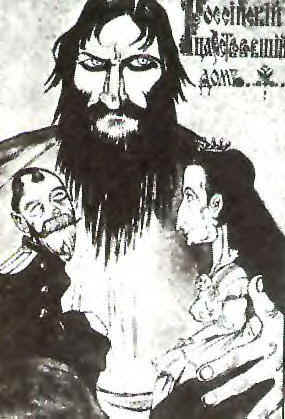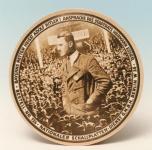
July 29
On 19 May, the Invincible Armada set sail from Lisbon on a mission to secure control of the English Channel and transport a Spanish army to the British isle from Flanders. The fleet was under the command of the Duke of Medina-Sidonia and consisted of 130 ships carrying 2,500 guns, 8,000 seamen, and almost 20,000 soldiers. The Spanish ships were slower and less well armed than their English counterparts, but they planned to force boarding actions if the English offered battle, and the superior Spanish infantry would undoubtedly prevail. Delayed by storms that temporarily forced it back to Spain, the Armada did not reach the southern coast of England until 19 July. By that time, the British were ready. On 21 July, the English navy began bombarding the seven-mile-long line of Spanish ships from a safe distance, taking full advantage of their long-range heavy guns. The Spanish Armada continued to advance during the next few days, but its ranks were thinned by the English assault. On 27 July, the Armada anchored in exposed position off Calais, France, and the Spanish army prepared to embark from Flanders. Without control of the Channel, however, their passage to England would be impossible. Just after midnight on 29 July, the English sent eight burning ships into the crowded harbor at Calais. The panicked Spanish ships were forced to cut their anchors and sail out to sea to avoid catching fire. The disorganized fleet, completely out of formation, was attacked by the English off Gravelines at dawn. In a decisive battle, the superior English guns won the day, and the devastated Armada was forced to retreat north to Scotland. The English navy pursued the Spanish as far as Scotland and then turned back for want of supplies. Battered by storms and suffering from a dire lack of supplies, the Armada sailed on a hard journey back to Spain around Scotland and Ireland. Some of the damaged ships foundered in the sea while others were driven onto the coast of Ireland and wrecked. By the time the last of the surviving fleet reached Spain in October, half of the original Armada was lost and some 15,000 men had perished. Queen Elizabeth's decisive defeat of the Invincible Armada made England a world-class power and introduced effective long-range weapons into naval warfare for the first time, ending the era of boarding and close-quarter fighting.



1603 Bartholomew Gilbert is killed in Virginia by Indians, during a search for the missing Roanoke colonists.
1693 The Army of the Grand Alliance is destroyed by the French at the Battle of Neerwinden.
1715 Ten of fifteen Spanish treasure galleons are sunk off the Florida coast by a hurricane.


1775 US Revolutionary War: The US Army Chaplaincy is founded, making it the second oldest branch of that service, after the Infantry.

1830 French Revolution: Liberals led by the Marquis of Lafayette seize Paris in opposition to the king's restrictions on citizens' rights.

1862 US Civil War: Confederates are routed by Union guerrillas at Moore's Mill, Missouri.


1875 Peasants in Bosnia and Herzegovina rebel against the Ottoman army.






1905 Birth: Dag Hammerarskjold, Swedish diplomat, Nobel Peace Prize winner (1961), 2nd secretary-general of the United Nations (UN) (1953-1961). His spiritual journal Markings was published in 1964, three years after his untimely death in a plane crash.
1914 WW1: Austrian forces invade Serbia and begin an artillery bombardment of Belgrade, the Serbian capital.
1914 WW1: Russia mobilizes its troops near the Austrian border.

1921 The Council on Foreign Relations is founded in Washington D.C. It's British counterpart is the Royal Institute of International Affairs.
1933 Holocaust: Professor Fischer, recently elected as Rector of the University of Berlin, in which capacity he is responsible for signing his Jewish colleagues' dismissal notices, says in his inaugural address: "The new leadership, having only just taken over the reins of power, is deliberately and forcefully intervening in the course of history and in the life of the nation, precisely where this intervention is most urgently, most decisively, and most immediately needed. To be sure, this need can only be perceived by those who are able to see and to think within a biological framework, but it is understood by these people to be a matter of the gravest and most weighty concern. This intervention can be characterized as a biological population policy, biological in this context signifying the safeguarding by the state of our hereditary endowment and our race, as opposed to the unharnessed processes of heredity, selection, and elimination." (Science)
1933 Holocaust: Germany revokes the citizenship of naturalized eastern European Jews.

1939 Holocaust: Jews in Slovakia are forbidden to live in rural areas.
1940 Holocaust: German Jews are forbidden to have telephones in their homes. (Persecution)
1941 WW2: Army Bishop Rarkowski issues a pastoral letter to the German armed forces describing Germany as "the savior and champion of Europe." We know he added, that this war against Russia is waged by us as "a European Crusade," a task similar to that fulfilled in earlier times by the Teutonic knights. (Lewy)
1941 WW2: Japan freezes Dutch assets.
1941 WW2: The Germans execute 122 "Communists and Jews" for resistance in Serbia. (Atlas)
1942 Holocaust: Eduard Schulte, general manager of the Giesche mining operation near Auschwitz, departs Breslau by train for Switzerland, where he plans to disclose the German plan for the "final solution of the Jewish question," which he apparently had learned of not long after Himmler's visit to Auschwitz on July 17. He soon gives his information to several Jewish organizations, and through them, anonymously, to the rest of the world. Schulte's warning seems to have been the first report to reach the West of an overall Nazi plan, authorized at the highest levels, to eliminate the Jewish people entirely. (Silence)
1943 WW2: Allied terror bombers again hit Hamburg by day and night.
1944 WW2: Radio Moscow urges the inhabitants of Warsaw to revolt: "The hour of action has already arrived."
1944 Holocaust: The Germans begin a "death march" evacuation of 3,250 slave laborers from Warsaw. (Atlas)


1948 King George VI opens the 14th, the first post-war, Olympic Games in London.
1952 A federal court in Chicago rules that a broadcasting company is not to be held liable for a guest's ad-lib remarks, unless malice or negligence on the station's part is proven.
1957 The International Atomic Energy Agency is established.
1958 The United States Congress passes legislation formally inaugurating the National Aeronautics and Space Administration (NASA). The establishment of NASA is a sign that the United States is committed to winning the 'space race' against the Soviets. President Eisenhower signs it into law. (National Aeronautics and Space Administration (NASA) and Space Act of 1958).

Central Afghanistan from Gemini 5
1965 Gemini 5 returns to earth after 12 days 7 hours 11 minutes and 53 seconds.
1967 Fire sweeps the USS Forrestal in the Gulf of Tonkin. 134 US servicemen are killed.
1968 Pope Paul VI's encyclical reaffirms his stand against artificial birth control.

Mars from Mariner 6
1969 Mariner 6 begins transmitting far-encounter photos of Mars.
1974 A second impeachment vote against Richard Nixon is taken by the House Judiciary Committee.
1975 OAS (Organization of American States) members vote to lift collective sanctions against Cuba. The US government welcomes the action and announces its intention to open serious discussions with Cuba on normalization.
1975 President Gerald Ford becomes the first US president to visit Auschwitz.
1993 The Israeli Supreme Court acquits retired Ohio autoworker John Demjanjuk of being Nazi death camp guard 'Ivan the Terrible.' His death sentence is thrown out and he is set free.
1999 A federal judge in Little Rock, Arkansas, fines President Bill 'That Woman' Clinton $89,000 for lying about his relationship with Lewinsky in his deposition in the Paula Jones sexual harassment case.
2000-2004

2004

Visit:




 Visit:
Visit:

Click Here to email the History: One Day At a Time webmaster.